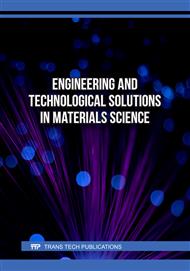p.3
p.19
p.29
p.37
p.53
p.61
p.69
p.83
Molecular Modeling Analysis of rGO/Fe3O4 Nanocomposite Molecules
Abstract:
Nanocomposites, comprising reduced graphene oxide (rGO) and iron oxide nanoparticles (Fe3O4) have emerged as promising materials for various applications due to their exceptional properties. However, a critical research gap exists in understanding the electrostatic potential distribution within these complex molecular structures. This study aims to address this gap by employing advanced computational techniques to visualize the electrostatic potential within rGO/ Fe3O4 nanocomposites at the molecular level. The primary objective of this study is to map the spatial distribution of the electrostatic potential within rGO/Fe3O4 nanocomposites. This will provide molecular-level insights into the electrostatic environment and its influence on electronic structure, reactivity, and intermolecular interactions. By correlating the electrostatic potential with material properties, such as reactivity and stability, we aim to enable the rational design of improved nanocomposites. The novelty of this research lies in its interdisciplinary approach, bridging materials science, chemistry, and physics. The outcomes are expected to have significant implications for optimizing the performance of rGO/Fe3O4 nanocomposites in applications ranging from energy storage to catalysis and beyond. This study contributes to our fundamental understanding of nanocomposite behavior and paves the way for enhanced materials design.
Info:
Periodical:
Pages:
53-58
Citation:
Online since:
December 2024
Keywords:
Price:
Сopyright:
© 2025 Trans Tech Publications Ltd. All Rights Reserved
Share:
Citation:



